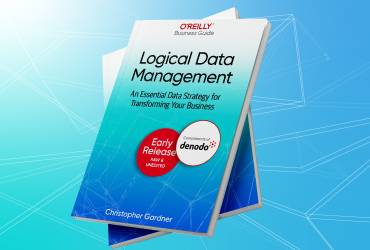What Is Metadata Management?
Metadata Management is the practice of organizing, maintaining, and governing metadata to maintain data quality, accessibility, and compliance across an organization. By serving as a bridge between raw data and meaningful insights, metadata management enables organizations to streamline data discovery, improve governance, and drive intelligent automation.
Effective metadata management goes beyond simple cataloging. It encompasses the full spectrum of metadata, so both technical teams and business users can leverage data efficiently:
- Technical Metadata – Provides detailed structural information such as schemas, field types, and data lineage, facilitating governance, interoperability, and compliance.
- Business Semantics – Translates complex technical metadata into user-friendly descriptions and taxonomies, making data more accessible and actionable for non-technical users.
- Active Metadata – Captures real-time usage patterns, access behaviors, and system performance metrics, enabling automation, optimization, and intelligent recommendations.
By integrating these layers of metadata, organizations can establish a comprehensive metadata management framework that enhances data governance, facilitates self-service analytics, and accelerates data-driven decision-making.
Why Is Metadata Management Important?
Metadata is the foundation of effective data management. Without a structured approach to metadata, organizations struggle with data silos, poor data quality, and compliance risks. A well-implemented metadata management strategy provides:
- Improved Data Discovery – Enables users to quickly find and access relevant data assets across distributed environments
- Enhanced Data Quality – Maintains metadata accuracy, consistency, and completeness, reducing errors in analytics and reporting
- Regulatory Compliance – Helps organizations meet privacy and security requirements such as GDPR, CCPA, and HIPAA
- Optimized Data Governance – Provides transparency into data lineage, ownership, and usage, supporting auditability and policy enforcement
- Operational Efficiency – Enables automation and intelligent recommendations that reduce manual efforts for data engineers and governance teams
- Fueling GenAI Success – As enterprises embrace GenAI, metadata management becomes more critical than ever. Properly managed metadata enables large language models (LLMs) to accurately identify, access, and incorporate corporate proprietary data into AI-generated responses. By leveraging metadata, organizations can:
- Improve AI Accuracy – Ground LLMs in high-quality, contextually relevant enterprise data, significantly reducing AI hallucinations
- Enable Data Contextualization – Provide AI with structured metadata to differentiate between public and private data sources
- Enhance Data Security and Compliance – Provide AI models only with access to authorized, compliant datasets
- Optimize AI Workflows – Automate AI-driven data retrieval and processing based on metadata-defined rules
With GenAI’s reliance on metadata for contextual grounding, data integrity, and security, metadata management is no longer just a governance best practice—it’s a strategic necessity for organizations looking to maximize the potential of AI.
Key Components of Metadata Management
Data Cataloging -
A data catalog serves as a centralized repository in which data and metadata is collected, organized, and enriched. It provides structured indexing, tagging, and categorization so data is easily discoverable.
Data Lineage and Impact Analysis -
Tracking how data flows across an organization is essential for trust and compliance. Data lineage maps transformations, dependencies, and ownership, allowing teams to assess data reliability and impact before making changes.
Metadata Standardization and Governance -
Standardization ensures that metadata adheres to best practices, promoting consistency and usability. Governance policies define roles, responsibilities, and access controls to maintain data integrity and security. When a metadata management platform is integrated with a data delivery platform, governance policies can be defined and actively enforced.
Active Metadata and Intelligent Automation -
Modern metadata management solutions go beyond static catalogs by leveraging active metadata—real-time insights into how data is accessed, transformed, and utilized. This enables AI-driven recommendations, automated quality checks, and cost-optimization strategies such as FinOps for cloud resource management.
Self-Service Data Discovery and AI Integration -
Organizations are increasingly embedding metadata into data self-service platforms and AI applications. By providing AI-powered assistants that utilize metadata for contextual understanding, users can streamline data exploration and reduce reliance on IT support.
How Metadata Management Works
- Metadata Collection – Metadata is extracted from data sources, applications, and workflows.
- Metadata Storage and Cataloging – Metadata is indexed and structured in centralized repositories or metadata-driven data catalogs.
- Metadata Enrichment – Context is added through business glossaries, taxonomies, and automated tagging.
- Metadata Governance – Policies are implemented to facilitiate metadata security, compliance, and integrity.
- Metadata Utilization – Metadata is leveraged for AI-driven automation, analytics, and governance workflows.
Applications of Metadata Management
- Enterprise Data Governance – Enables structured data handling and compliance with regulatory requirements
- Business Intelligence (BI) and Analytics – Enhances reporting, dashboards, and AI-driven insights with rich metadata
- Cloud Data Management – Manages metadata across multi-cloud and hybrid environments to enable seamless interoperability
- Machine Learning and AI Optimization – Uses metadata to track model training data lineage and improve AI model performance
- Digital Asset Management (DAM) – Organizes media, documents, and other assets with rich metadata for easy retrieval
Best Practices for Metadata Management
- Define a Clear Metadata Strategy – Align metadata management with business goals and compliance requirements.
- Automate Metadata Collection and Tagging – Utilize AI-powered tools to capture and enrich metadata in real time.
- Maintain Metadata Accuracy and Consistency – Conduct routine audits to validate metadata quality.
- Implement Strong Metadata Governance – Establish clear roles, responsibilities, and policies for metadata stewardship.
- Facilitate Cross-Team Collaboration – Enable data engineers, business users, and compliance teams to work together through a unified metadata management framework.
Challenges in Metadata Management
- Data Silos – Metadata often resides in isolated systems, making it difficult to unify and analyze.
- Metadata Complexity – Managing multiple metadata formats and structures can be overwhelming.
- Security and Privacy Risks – Providing metadata protection and regulatory adherence is an ongoing challenge.
- Scalability Issues – Growing data volumes require scalable metadata solutions to maintain performance and governance.
Future Trends in Metadata Management
- AI-Powered Metadata Discovery – Automating metadata tagging using natural language processing (NLP)
- Metadata-Driven FinOps & Cost Optimization – Leveraging metadata to analyze cloud resource consumption and optimize costs
- Real-Time Metadata Processing – Enabling dynamic metadata updates in streaming data environments
- Self-Service Metadata Portals – Providing intuitive, business-friendly metadata search and access
- Knowledge Graph Integration – Enhancing metadata relationships for advanced analytics and AI applications
The Role of Logical Data Management Platforms in Metadata Management
Logical data management platforms are uniquely positioned to address the challenges of metadata management because they sit between all data consumers and data sources. Unlike traditional metadata repositories, which often operate in silos, logical data management platforms have real-time access to all types of metadata across an organization, including:
- Technical Metadata – Schema definitions, data lineage, and system mappings.
- Business Semantics – Contextual definitions, business glossaries, and taxonomies.
- Active Metadata – Real-time insights into data usage, access patterns, and system performance.
By aggregating, analyzing, and applying metadata dynamically, logical data management platforms can augment and automate much of the work traditionally handled by data professionals. This includes intelligent data discovery, automated governance enforcement, real-time data optimization, and AI-driven recommendations—all of which improve both data quality and business agility.
Discover the Leading Logical Data Management Platform
Denodo is the leading logical data management platform, enabling organizations to simplify metadata management, enhance data governance, and accelerate data-driven innovation. Learn more about how Denodo can help your organization maximize the value of its metadata.





